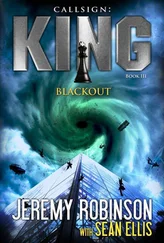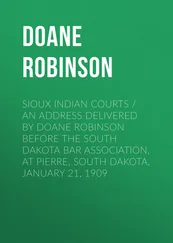“Don’t tell me they did all that on U.S. soil,” Miller said. “I don’t care how many Nazis are embedded in the military, they’d need a full-scale base and lots of space to fabricate thousands of these Bells. It would be impossible to hide.”
“You’re right,” Vesely said. “Americans filtered money, personnel, and resources, but the technology was developed somewhere else.”
“And you know where that is?” Adler asked.
“I do,” Vesely said, “but…”
“But what?” Adler said.
Miller knew exactly what the man wanted. He had spent his whole life researching this subject; in essence, preparing for this fight. “He wants to come with us.”
“I don’t think—”
Miller cut Adler off. “Done.”
“Yes!” Vesely said, thrusting a victorious fist in the air.
Adler looked incredulous.
“We don’t have time to beat the information out of him,” Miller explained. “And I’ve seen the way he handles a gun. Might come in handy.” He turned to Vesely. “So, where are we going? I suspect it will be far from the eyes of civilization.”
“Correct again, Survivor. We’re going to Antarctica.”
Neither Adler nor Miller spoke. It was too crazy. Too far. How could they get there?
Vesely spoke, his voice serious. “I can see you need to be convinced. Let’s start before war. In 1938, Germany launched expedition to Antarctica under supervision of Reichsmarschall Hermann Göring, who would later become Oberbefehlshaber or Supreme Commander of the Luftwaffe, Germany’s air force, and after war was tried and convicted of war crimes and crimes against humanity. He committed suicide before being hanged. I say this because Göring’s promotion may be result of his success in the Antarctic. They took a seaplane carrier, the Schwabenland, to Queen Maud Land, a region of Antarctica claimed by Denmark. They flew over area, dropping clouds of tiny, spiked flags bearing swastika, and renamed region Neuschwabenland. They also took thousands of photos of coast, mountain ranges, and ice sheets. A large team of scientists including biologists, geologists, and climatologists scoured the land and claimed to have found geothermal hot springs—free of ice and home to algae. They spoke of deep, heated caverns, noted food sources such as penguins, walruses, and whales, and without saying so directly, made a convincing argument that this area, with its harsh terrain, freezing temperatures, and geographic isolation, would make perfect place for a secret base.
“Göring returned to Germany five months later, made his report, handed out medals, and never, not once, spoke of mission again. Flash forward to end of the war. The Allies are advancing on all fronts. The war is essentially over. Obergruppenführer Hans Kammler, not only oversaw construction of the concentration camp system, extermination camps, and all cremation facilities used on prisoners, but also ran a think tank that developed secret weapons projects including the Messerschmitt ME 262 fighter jet, V-2 rockets, and the Bell alongside Obergruppenführer Emil Mazuw. More than that, he also oversaw relocation of the Reich’s R and D facilities to underground locations, something he apparently had previous experience with before war. He was also in charge of a special evacuation plan developed by Martin Bormann, personal secretary to the Führer. The plan detailed how Hitler, key scientists—ones that would not be missed—personnel, supplies, and projects like the Bell, would board several Junkers 390 transport planes just miles from our current location, at the very same place Kammler was last seen alive. There are several contradictory reports of his death, but many believe he simply vanished. The plan had the Junkers fly to the coast of Norway where all materials and personnel would be transported to a fleet of waiting U-boats, several of which were advanced XXI variety—wire-guided torpedoes, magnetic proximity fuses—advanced for the time.
“Three days after Hitler supposedly killed himself—”
“What do you mean, supposedly ?” Adler asked.
Vesely shook his head. “You are German. You should know this.”
Adler crossed her arms. “Some Germans don’t like talking about Hitler. I’m not as fascinated by the man as you apparently are.”
“Fascination is the wrong word,” Vesely said. “Prepared.”
“Know your enemy,” Miller chimed in. “Finish your story. Please.”
Vesely looked at the factory ceiling, recalling where he’d stopped talking, and said, “The Russians told the world that Hitler committed suicide, along with his wife, Eva Braun, by shooting himself. They claimed his body had then been covered in gasoline and set on fire. They recovered two charred bodies and a skull fragment. There was never a positive ID made from body. No DNA tests. And the Russians cremated the remains a second time, in 1970, and scattered the ashes. Many believe the Russian claims were simply propaganda that U.S. and England went along with because they did not want the world to know that Hitler still lived, and they could not find him.”
“A World War Two Bin Laden situation,” Miller said.
“Exactly. That one man cannot be found by world’s superpower would have been as embarrassing then as it is now.” Vesely stretched and continued. “Three days after his supposed death, Kammler’s disappearance, and the mass killing of sixty-two scientists that worked on the Bell, a flotilla of U-boats left coast of Norway and headed for Iceland.”
“This is part of the plan?” Adler asked.
“No,” Vesely said. “This is history. The submarine fleet made run south between Iceland and Greenland, where they encountered an Allied battle group. The result was an epic battle, perhaps the last of the war, that left only one Allied survivor, the commander of a destroyer, who told of an overwhelming naval force of advanced submarines that, after wiping out the Allied fleet, powered south and were never seen again.”
Vesely held his hands out to his impatient-looking audience. “I am almost finished. In 1946, U.S. Admiral Byrd led fleet of seaplane carriers, destroyers, fueling ships, and submarines to Neuschwabenland, the region claimed by Germany before war. The expedition was prepared for eight-month stay. Forty-eight hours after reaching Neuschwabenland, they were ordered back to the States. No official reason was ever given for mission’s cancelation, but I suspect Nazi influence in upper echelons of American power was already at work.”
“That’s all very interesting history,” Miller said. “And I admit that I’m intrigued, but how can you be sure that after seventy years, the Nazis—including Hitler and Kammler—are still hiding out in Neuschwabenland?”
“Because,” Vesley said, “a U.S. aircraft carrier group has been stationed there for the past five months.”
“How can you know that?” Adler asked.
“Aircraft carrier groups are hard to hide,” Vesely said. “Even in Antarctica. Several whaling, fishing, and scientific expeditions have come across the fleet, and I make it habit to keep track of such things.”
Miller took out his phone and prepared to call the president. If Vesely was right and there was an aircraft carrier group at the German-claimed territory, he required no more convincing. In part, the presence of an aircraft carrier was good news because they would have a place to land and a jumping-off point to Antarctica. The bad news was, a portion of the crew, and most certainly the officers, were part of the Fourth Reich. A warm welcome might include surface-to-air missiles.
But if that’s where the enemy hid themselves, that’s where he would go. Miller’s thumb hovered over the Send button, but a loud booming voice stopped him from placing the call.
Читать дальше












